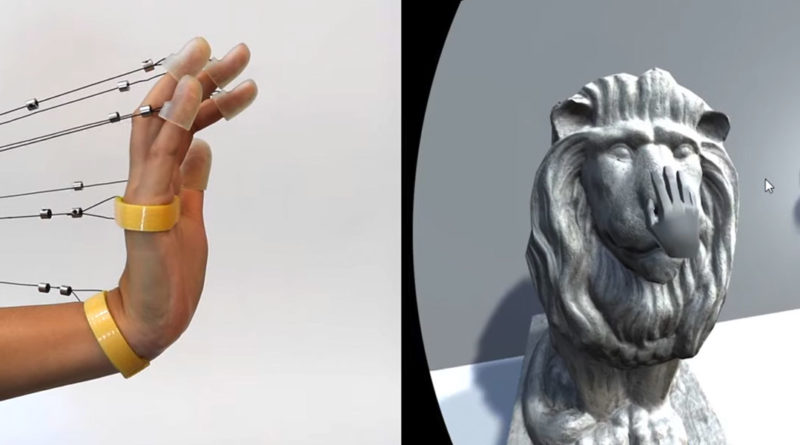Wireality VR Device Replicates Touch
Virtual Reality has come a long way in recent years. Amazing worlds and experiences can be created by immersing users in sights and sounds. But what about touch? Researchers at Carnegie Mellon University are working on a device that could revolutionize virtual reality.
It’s called Wireality. The VR device allows users to feel things like walls and solid objects by way of spring-loaded cables. Attached to a user’s hands and fingers, the cables help simulate a sense of structure and firmness. According to a paper published by the Conference on Human Factors in Computing Systems, users found the multi-string device more realistic than other haptic techniques.
For example, if a user is close to a virtual wall, the strings are locked in a way to emulate the sensation of feeling the real thing. Along with touching things like walls and objects, the strings can also emulate wrapping hands around a railing or interacting with a virtual character.
Wireality Cables Controlled by Shoulder Mounted Device
The modular cables are controlled by a battery-powered shoulder-mounted device. An UltraLeap sensor attached to the VR headset tracks hand and finger motions. When the UltraLeap senses that a user’s hand is in the proximity of a virtual wall or object, the ratchets engage in a sequence relevant to the interaction. When the user withdraws their hand, the latches disengage.
“I think the experience creates surprises, such as when you interact with a railing and can wrap your fingers around it. It’s also fun to explore the feel of irregular objects, such as a statue,” said Cathy Fang, lead researcher on the project.
According to Fang, Wireality weighs about 10 ounces and would cost about $50 to produce in large quantities. It also does not use a lot of power. Obviously no word on when something like this could make it market, but the technology could greatly enhance VR games and experiences.
Source: The Journal
Check out our articles on Dubai’s first robot cafe and a VR simulation that allows you to fly through the lungs of a coronavirus patient.

